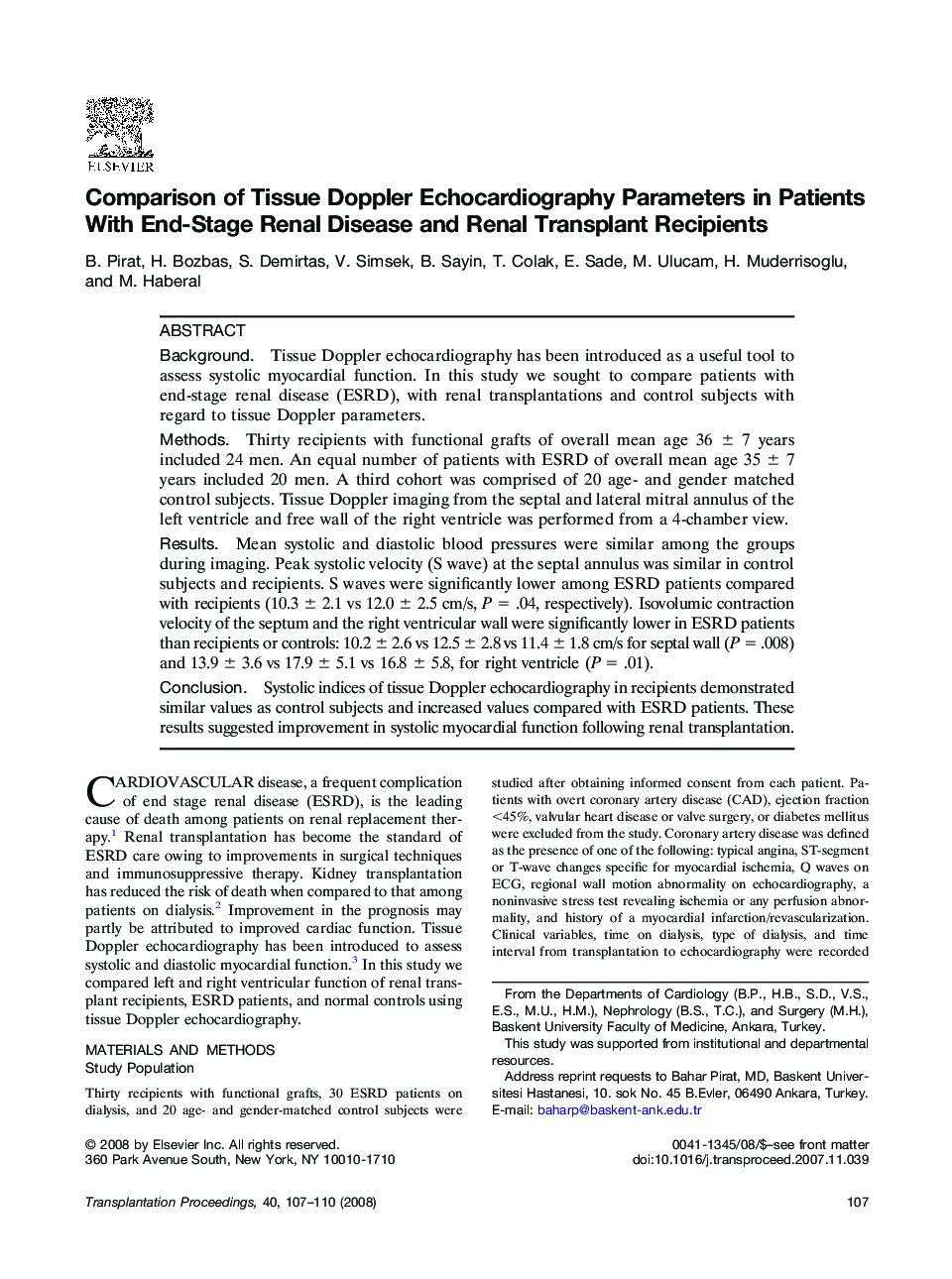| Article ID | Journal | Published Year | Pages | File Type |
|---|---|---|---|---|
| 4260438 | Transplantation Proceedings | 2008 | 4 Pages |
BackgroundTissue Doppler echocardiography has been introduced as a useful tool to assess systolic myocardial function. In this study we sought to compare patients with end-stage renal disease (ESRD), with renal transplantations and control subjects with regard to tissue Doppler parameters.MethodsThirty recipients with functional grafts of overall mean age 36 ± 7 years included 24 men. An equal number of patients with ESRD of overall mean age 35 ± 7 years included 20 men. A third cohort was comprised of 20 age- and gender matched control subjects. Tissue Doppler imaging from the septal and lateral mitral annulus of the left ventricle and free wall of the right ventricle was performed from a 4-chamber view.ResultsMean systolic and diastolic blood pressures were similar among the groups during imaging. Peak systolic velocity (S wave) at the septal annulus was similar in control subjects and recipients. S waves were significantly lower among ESRD patients compared with recipients (10.3 ± 2.1 vs 12.0 ± 2.5 cm/s, P = .04, respectively). Isovolumic contraction velocity of the septum and the right ventricular wall were significantly lower in ESRD patients than recipients or controls: 10.2 ± 2.6 vs 12.5 ± 2.8 vs 11.4 ± 1.8 cm/s for septal wall (P = .008) and 13.9 ± 3.6 vs 17.9 ± 5.1 vs 16.8 ± 5.8, for right ventricle (P = .01).ConclusionSystolic indices of tissue Doppler echocardiography in recipients demonstrated similar values as control subjects and increased values compared with ESRD patients. These results suggested improvement in systolic myocardial function following renal transplantation.
